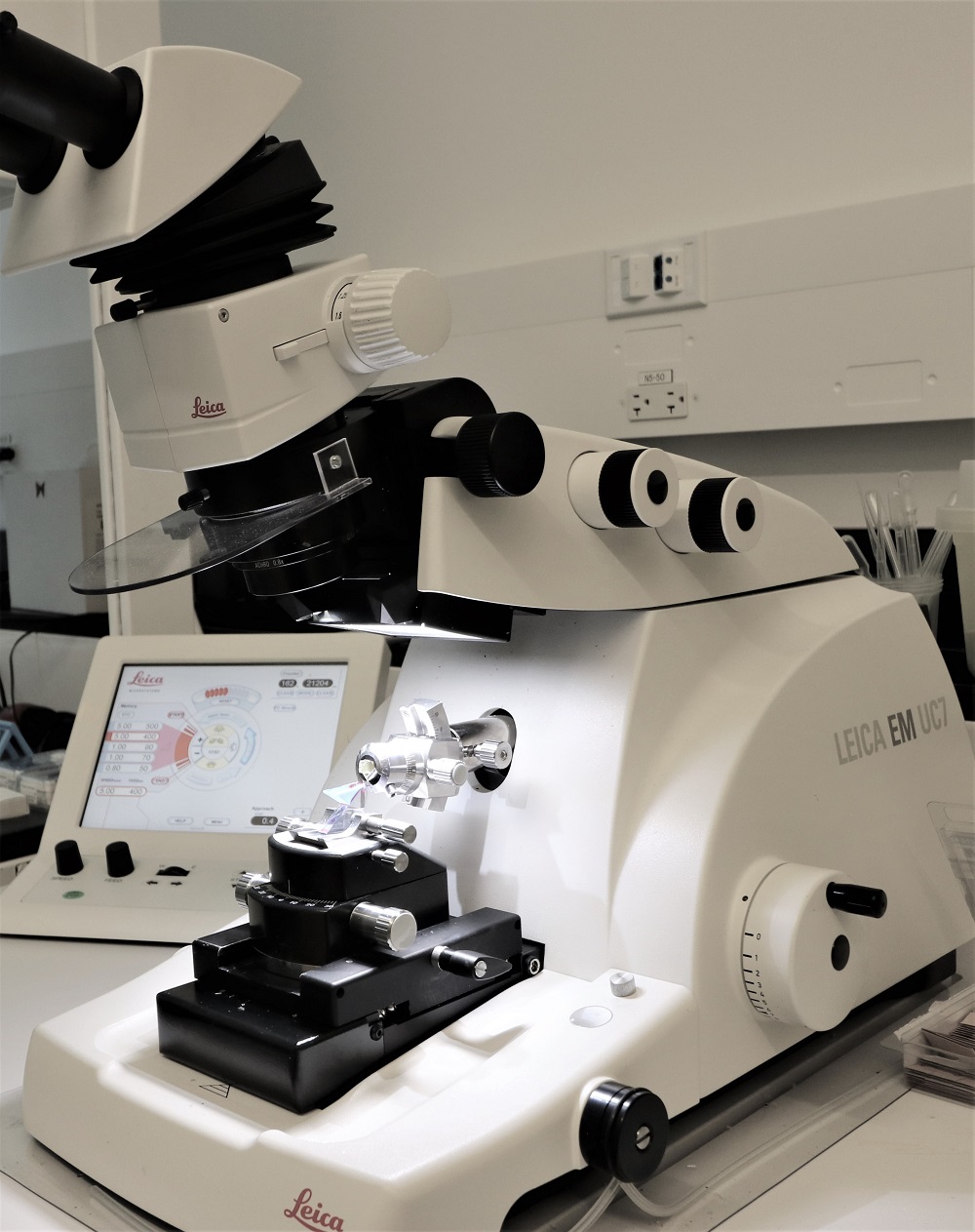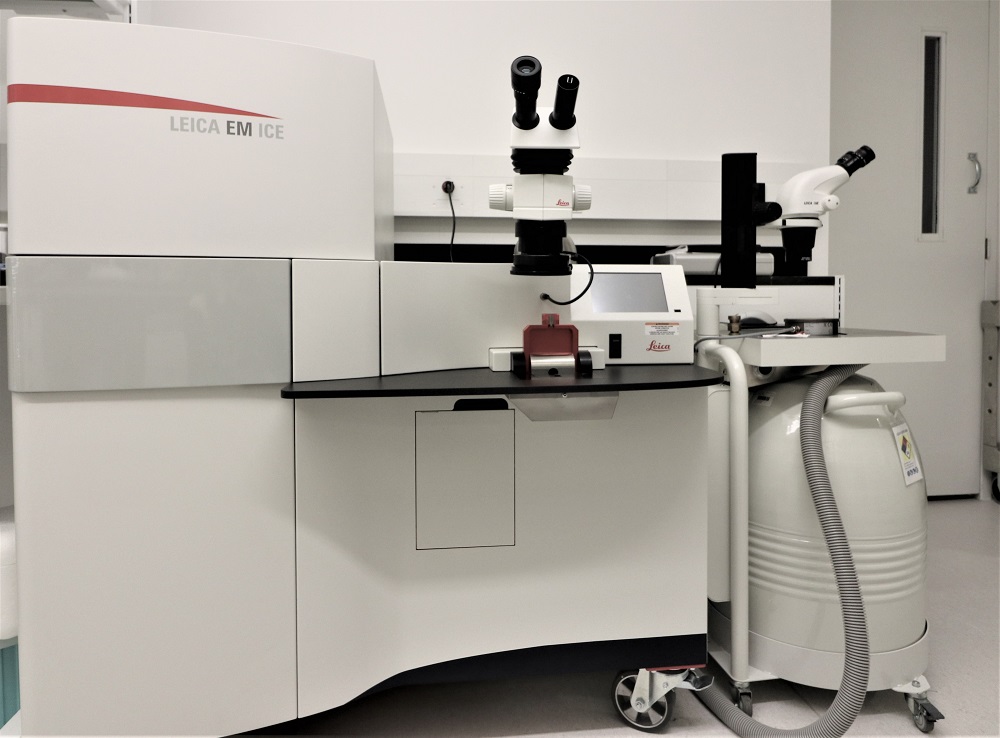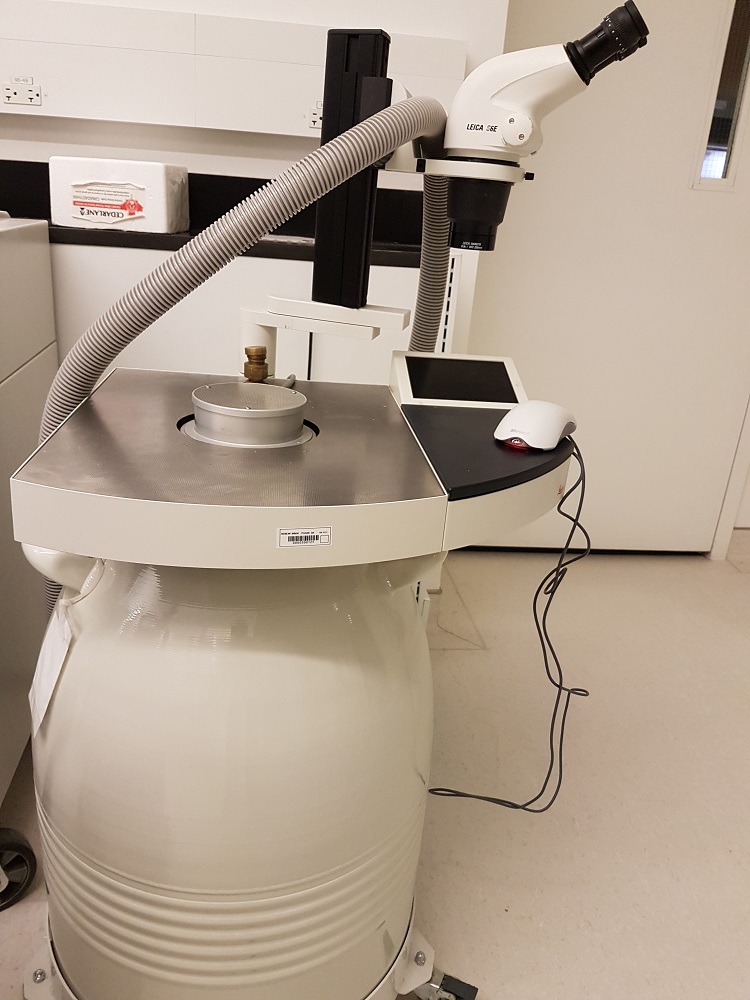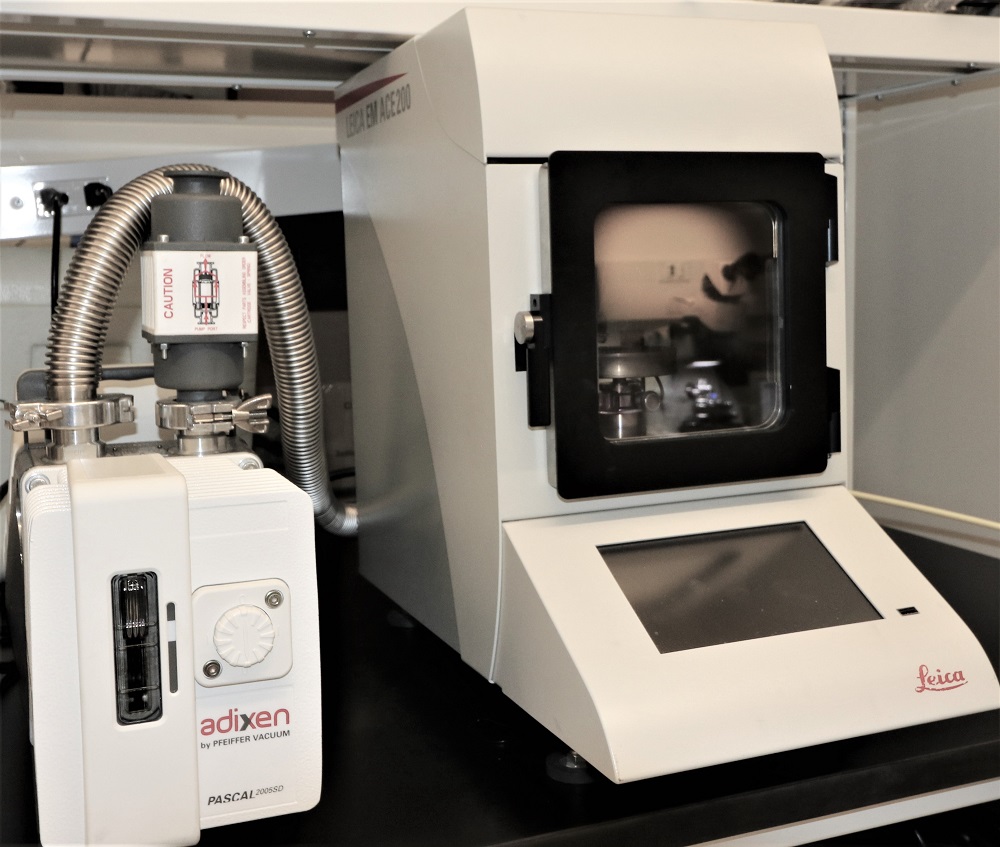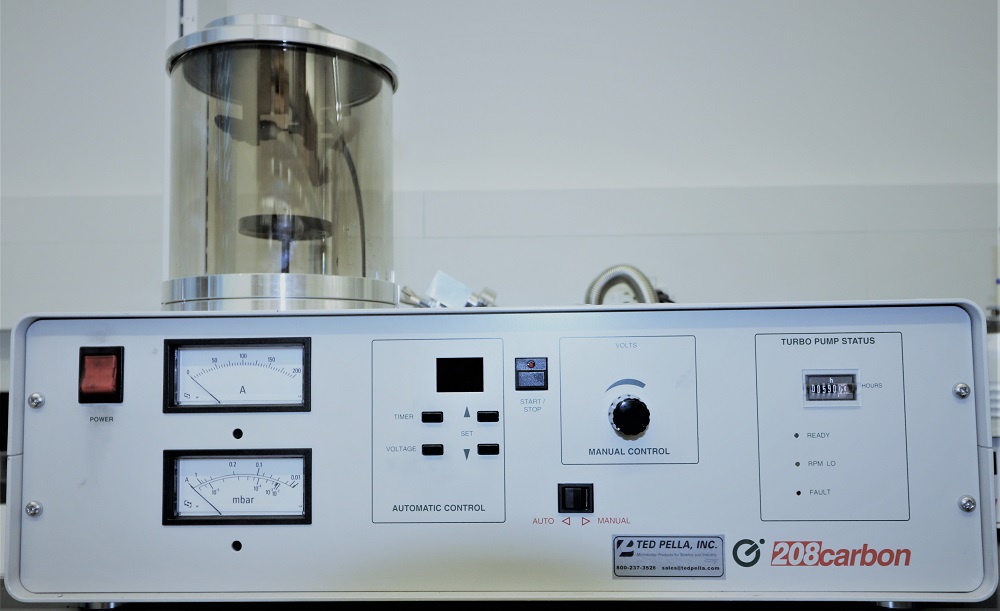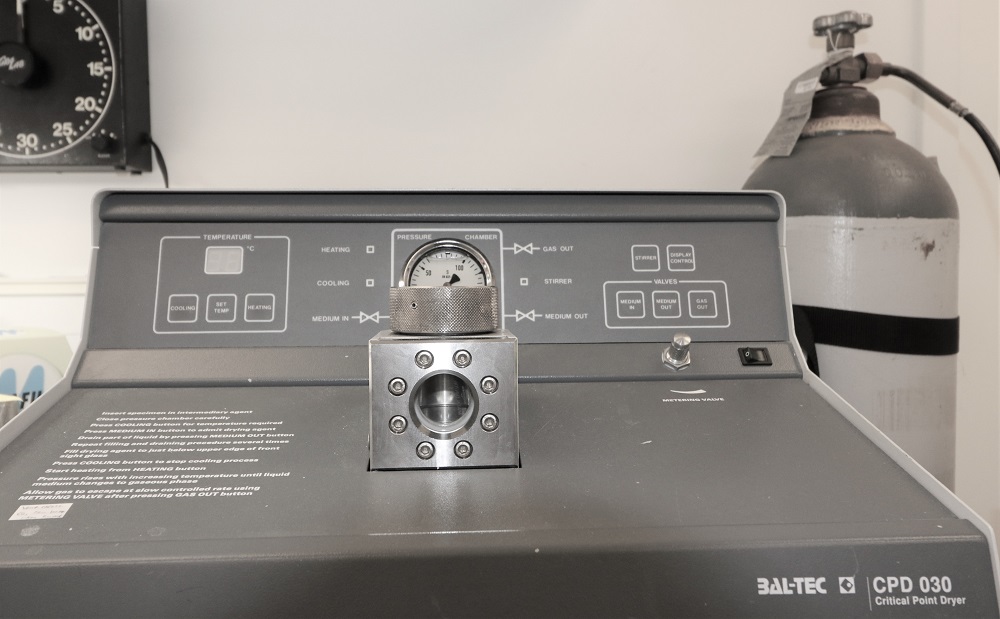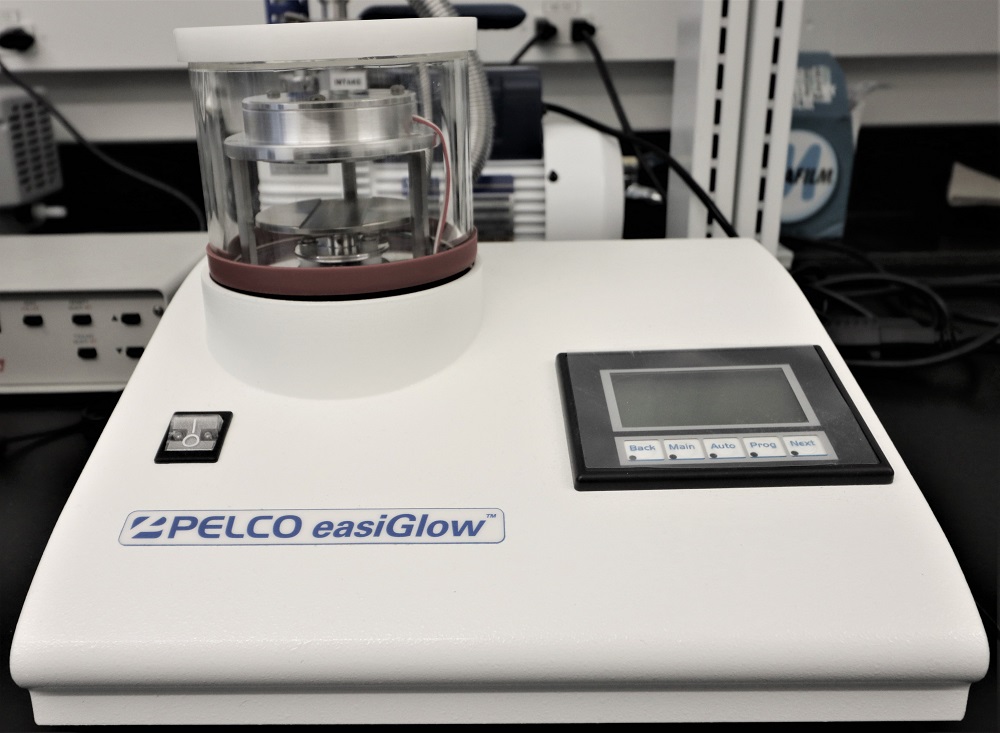Cellular and Molecular Electron Microscopy (CMEM)
The Cellular and Molecular Electron Microscopy (CMEM) core is a joint facility of SickKids Research Institute and the Lunenfeld-Tanenbaum Research Institute. The facility provides electron microscopy services to the scientific community, including research institutes and universities.
CMEM offers an extensive range of services for transmission and scanning electron microscopy (TEM and SEM) including sample processing for biological and organic specimen, negative stain imaging, consultation and student training.
Cellular and Molecular Electron Microscopy (CMEM)
The Cellular and Molecular Electron Microscopy (CMEM) core is a joint facility of SickKids Research Institute and the Lunenfeld-Tanenbaum Research Institute. The facility provides electron microscopy services to the scientific community, including research institutes and universities.
CMEM offers an extensive range of services for transmission and scanning electron microscopy (TEM and SEM) including sample processing for biological and organic specimen, negative stain imaging, consultation and student training.
Equipment
Fees
| Service/equipment | Price |
|---|---|
| Technologist’s time | $60/hr |
| Tecnai TEM | $60/hr |
| Phoenix TEM | $60/hr |
| Hedwig TEM | $60/hr |
| Preparation equipment | Price |
|---|---|
| Ultramicrotome | $50/hr |
| High-pressure freezer | $250/10 shots |
| Freeze substitution | $50/day |
| Sputter coater | $22/run |
| Carbon evaporator | $22/run |
| Critical point dryer | $22/run |
| Specimen preparation | Price |
|---|---|
| TEM preparation | $65/specimen |
| SEM preparation (fixation, critical point drying, sputter coat, immunostaining) |
$65/specimen |
| Semi-thin sections | $13/block |
| Thin sections | $27/block |
| ** Industrial rate is cost X2 |
Contact and bookings
For same-day preparation and training, please contact Dr. Ali Darbandi, Facility Manager at ali.darbandi@sickkids.ca
Facility Address: 686 Bay St, Peter Gilgan Centre for Research and Learning, 6th floor, Room 9621. Toronto, ON, Canada M5G 0A4
All equipment reservation is done through QReserve, our online booking calendar.
Standard operating procedures (SOPs)
Team

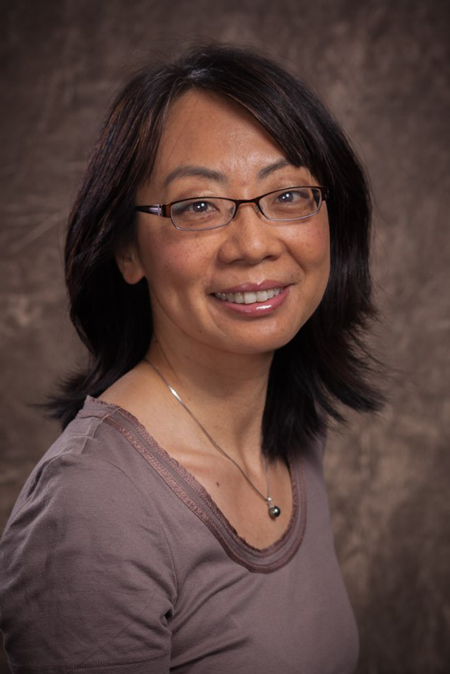
Dr. Mei Zhen
zhen@lunenfeld.ca
416-586-4800
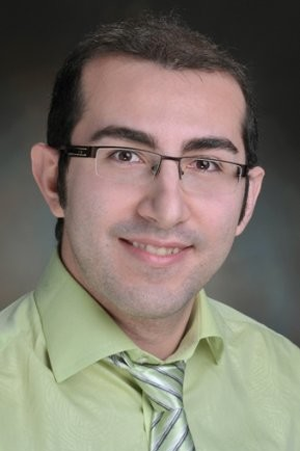
Dr. Ali Darbandi, Facility Manager
ali.darbandi@sickkids.ca
416-813-7654 ext. 309970
Recent publications
- K. Battiston et al, Nature communications, 12, 2875 (2021)
- M. Mahendralingam et al, Nature Metabolism, 3, 665-681 (2021)
- L. Antounians et al, Science Translational Medicine, 13, issue 550 (2021)
- M. Ebrahimi et al, Acta Biomaterilia, 132, 227-244 (2021)
- L. Ermini et al, Front. Cell. Dev. Biol. 91 652651 (2021)
- T. Li et al, Fertility and Sterility, 115, 1327-1336 (2021)
- A. Karunendiran et al, BMC Molecular and Cell Biology, 22:38 (2021)
- D. Fernandes et al, RSC Adv, 11, 4906-4920 (2021)
- J. Xu et al, Small, 17, 2100345 (2021)
- C. Daeschler et al, CMAJ, 192, 42 (2020)
- Ngo et al, J. Am. Chem. Soc 142, 42, 17938–17943 (2020)
- Zhang et al, CS Nano, 14, 8, 9478–9490 (2020)
- Ouyang et al, Nature Materials, The dose threshold for nanoparticle tumour delivery (2020)
- Smith et al, PLOS ONE, 15(8), e0231364 (2020)
- Soeandy et al, Cellular and Molecular Neurobiology,
Necroptotic–Apoptotic Regulation in an Endothelin-1 Model of Cerebral Ischemia (2020)
- Rao-Bhatia et al, Developmental Cell, 52,5, 647-658 (2020)
- Chung et al, Nature Communications, 11, 825 (2020)
- Antounians et al, BioRxiv, Impaired Fetal Lung Development can be Rescued by Administration of Extracellular Vesicles Derived from Amniotic Fluid Stem Cells (2020)
- Balakrishnan et al, BioRxiv, SMPD3-mediated extracellular vesicle biogenesis inhibits oligodendroglioma growth (2020)
- Steadman et al, Neuron, 105,1, 150-164 (2020)
- Fievel, University of Toronto Thesis, (2020)
- Ghomashchi, University of Toronto Thesis, (2020)
- Mulcahy et al, Neural Circuit 13,16 (2019)
- Poon et al, ACS Nano, 13, 5, 5785-5798 (2019)
- Fernandes et al, Optical Materials Express, 9,12, 4532-4544 (2019)
- Vijayakumar et al, Nanoscale Horiz, 4, 495-515 (2019)
- Lazarovits et al, ACS Nano, 13, 7, 8023-8034 (2019)
- Sandoval et al, Int J Clin Exp PAthol 12, 5, 1713-1722 (2019)
- Coindre et al, Advanced Healthcare Materials, 8, 18 (2019)
- Overchuk et al, ACS Nano, 13,4,4560-4571 (2019)
- Reunov et al, Differentiation, 109, 34-41 (2019)
- Condori et al, eLife 8, e47918 (2019)
- Coquenlorge et al, Cell Reports, 27,10, 3006-3018 (2019)
- Kolosov, et al, Journal of Experimental Biology, 222 (2019)
- Zhao et al, Human Molecular Genetics, 28, 24 4186-4196 (2019)

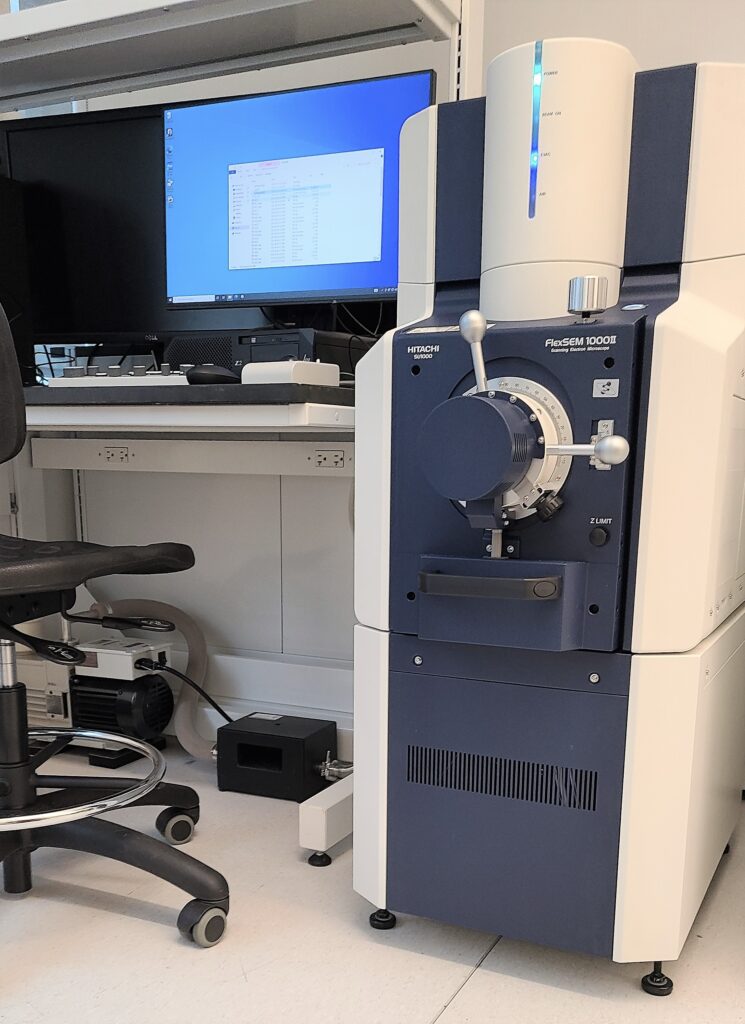
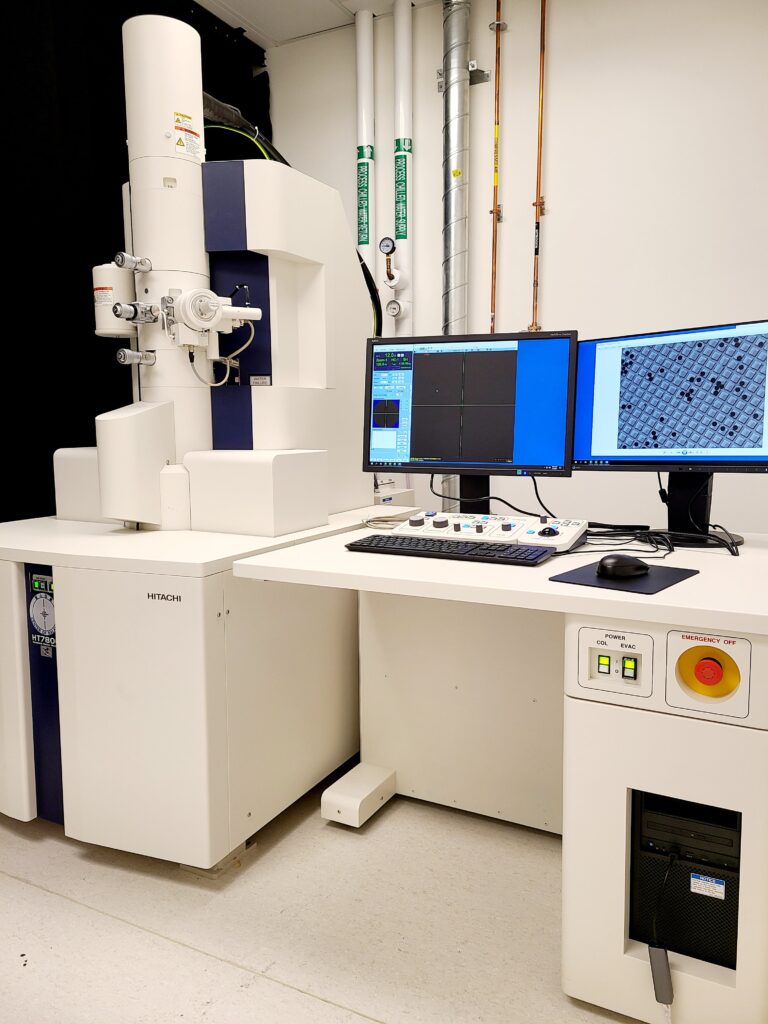 Hitachi HT7800 TEM is the revolution of ultimate luxury TEM imaging. This 120 kV microscope with dual objective lens enables both High Resolution and High Contrast imaging. Advanced stage-navigation function provides whole-grid searching and efficient image acquisition.
Hitachi HT7800 TEM is the revolution of ultimate luxury TEM imaging. This 120 kV microscope with dual objective lens enables both High Resolution and High Contrast imaging. Advanced stage-navigation function provides whole-grid searching and efficient image acquisition.
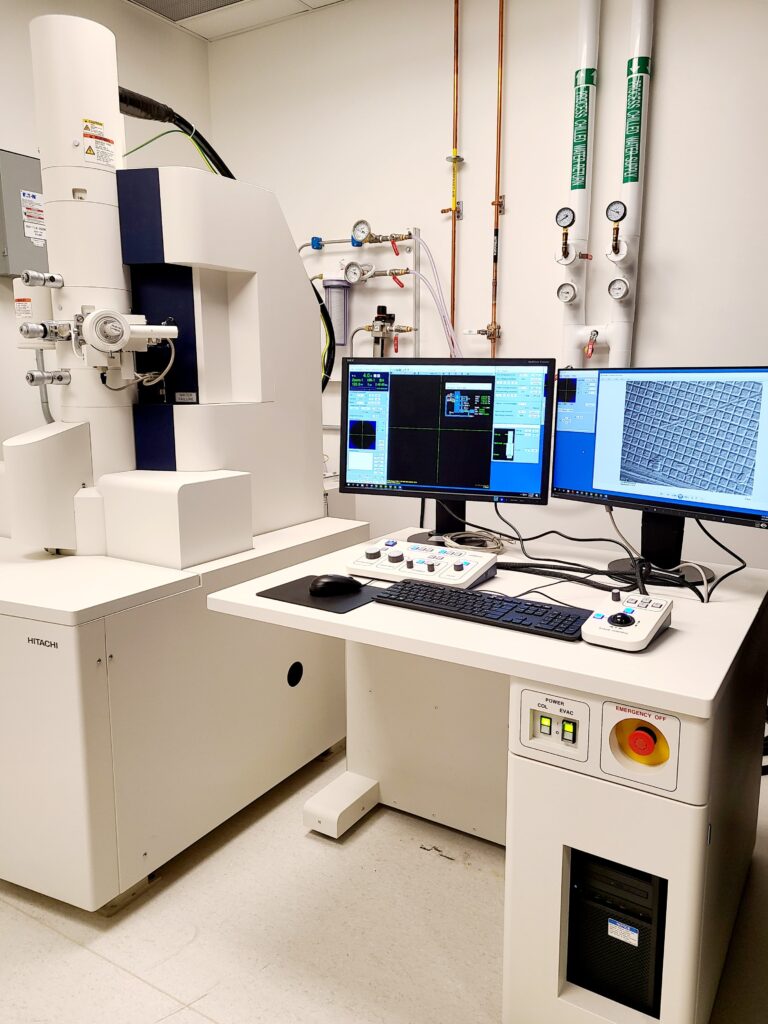 Hitachi HT7800 TEM is the revolution of ultimate luxury TEM imaging. This 120 kV microscope with dual objective lens enables both High Resolution and High Contrast imaging. Advanced stage-navigation function provides whole-grid searching and efficient image acquisition.
Hitachi HT7800 TEM is the revolution of ultimate luxury TEM imaging. This 120 kV microscope with dual objective lens enables both High Resolution and High Contrast imaging. Advanced stage-navigation function provides whole-grid searching and efficient image acquisition.